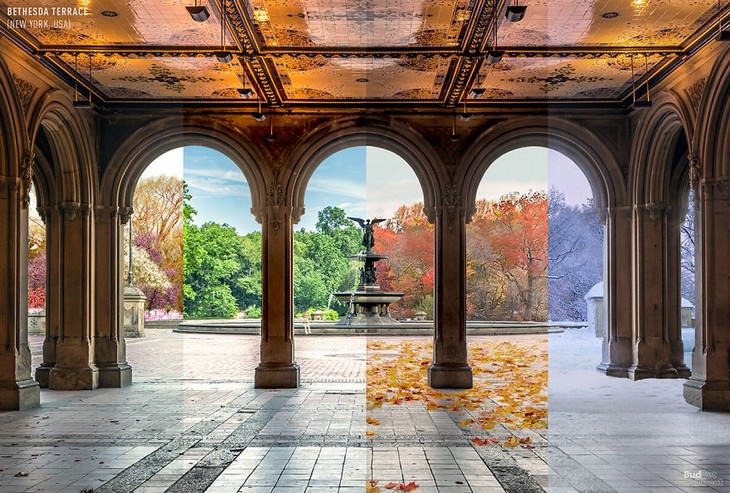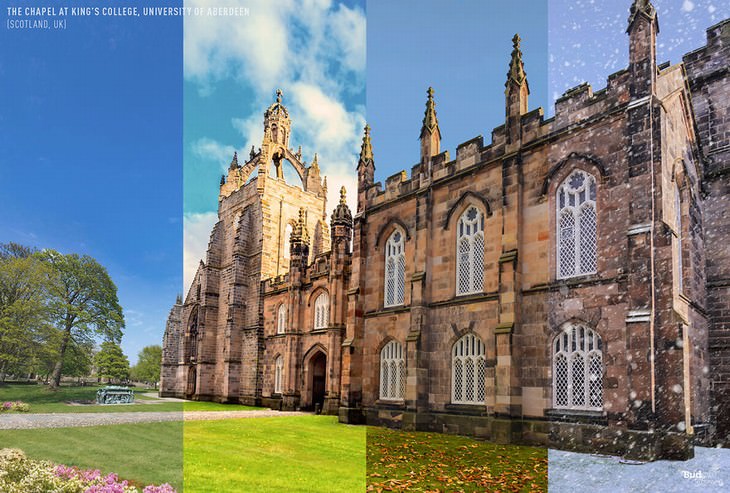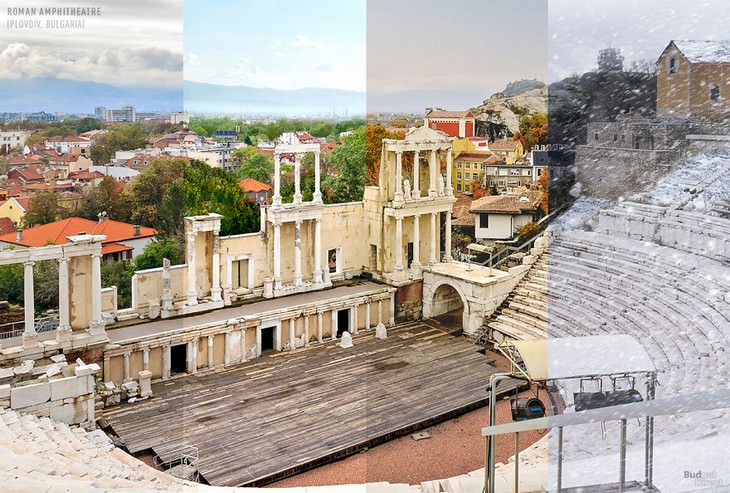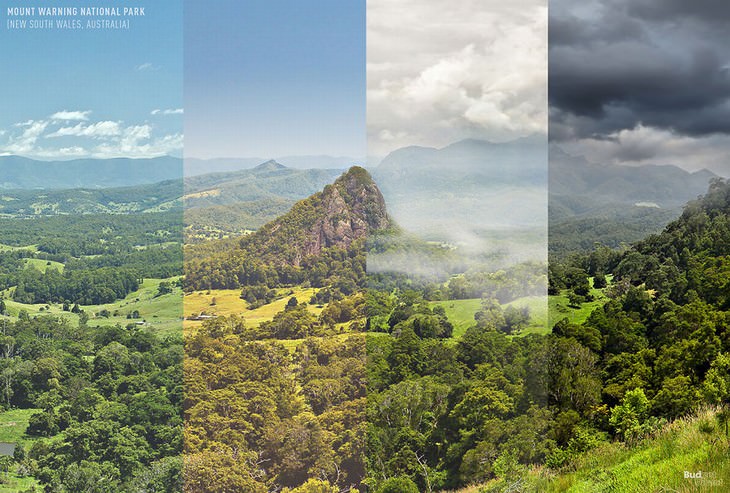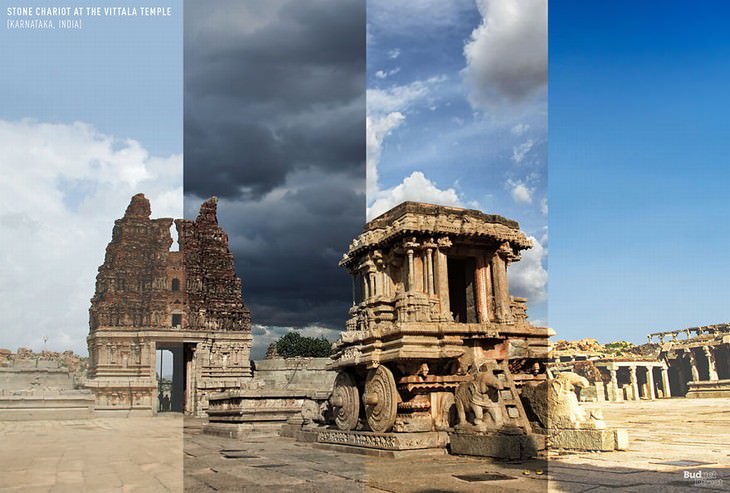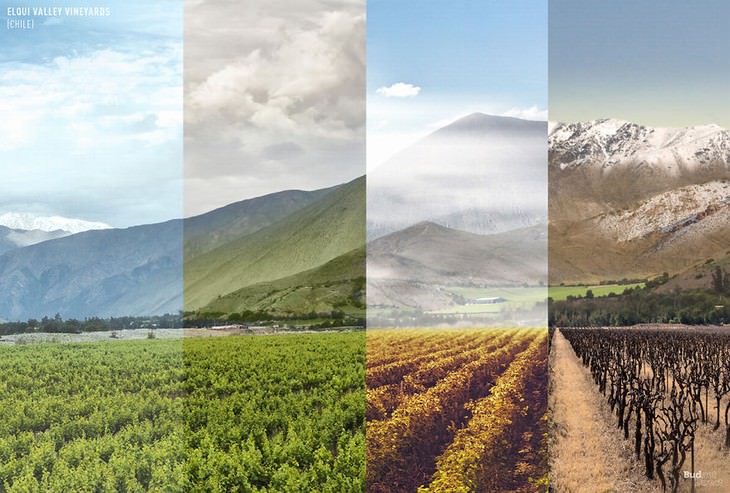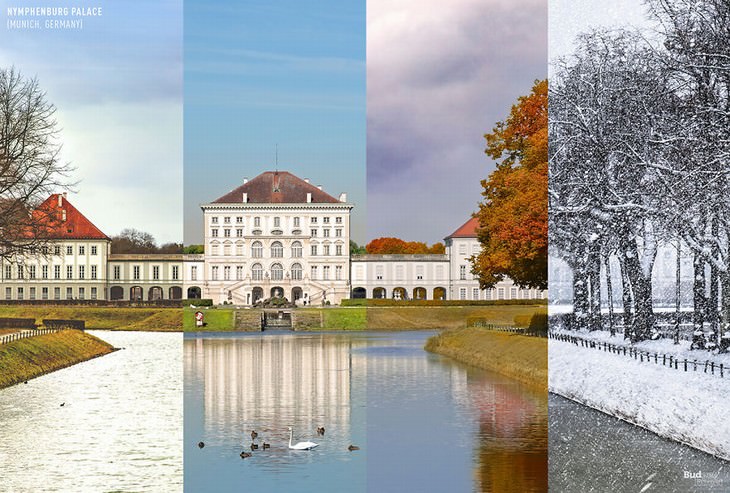1. Bethesda Terrace
Location: New York City, USA
Few locations in New York City could showcase the change of seasons better than Central Park. Bethesda Terrace is a historical building situated in the heart of the famous park. Together with the fountain carrying the same name, Bethesda Terrace was one of the very few major architectural projects being built during the Civil War.
In the image above, the stone arcade of the terrace complements the natural backdrop that changes with the seasons, serving as a constant anchor point for the viewer.
2. King’s College Chapel, University Of Aberdeen
Location: Aberdeen, Scotland, UK
The old campus at the University of Aberdeen looks like a real Medieval castle (because essentially it is one). Built between 1498 and 1509 CE, the chapel was inspired by King Solomon’s Temple in Jerusalem. The building was designed to serve as a studying facility, King’s College, and remains as such to this day.
The most striking feature of the building’s facade is an intricately crafted imperial crown that rises over the tower of the chapel. The building looks equally captivating at any time of the year, too, wouldn’t you agree?
3. The Roman Theater of Plovdiv
Location: Plovdiv, Bulgaria
Used to this day, the theater in Plovdiv is among the world's best preserved Ancient Roman theaters. As unbelievable as it may sound, the ruins of the theater were buried for nearly 16 centuries, as the site was abandoned after it was destroyed by an earthquake or fire sometime in the 4th century. Only in 1968 was it uncovered during an archeological excavation, and by 1981 it was restored to its present form. Ever since the theater became the cultural center of the city and hosts many concerts and music events every year with the capacity to provide 5.000-7.000 seats for spectators.
4. Wollumbin National Park
Location: New South Wales, Australia
This green paradise looks almost surreal, we can easily imagine it as the perfect setting for a movie. This particular vista depicts the main sight of the national park, the extinct volcano called Mount Warning.
But Wollumbin National Park isn’t just a captivating tourist destination, it’s also an important nature conservation site for threatened Australian bird species. The park also has cultural significance for the local aboriginal population, the Bundjalung people, with the name of the park literally meaning “fighting chief of the mountains”.
5. Stone Chariot at The Vittala Temple Complex
Location: Hampi, Karnataka, India
The jewel of the Vittala Temple near Hampi is the astonishingly detailed Stone Chariot, a UNESCO world heritage site you can see in the foreground in the photo above. Although the chariot itself isn’t that old (it was built in the 16th century) it was heavily inspired by the earlier Dravidian style of architecture.
The intricate detailing on the chariot depicts mythical battles, and the chariot itself is believed to have magical significance, with local villagers believing that the apocalypse would ensue if the chariot moves from its place.
6. Elqui Valley Vineyards
Location: Northern Chile
Isn’t it astonishing how this Chilean vineyard, mountain range, and even the sky changes throughout the year? Situated near the Elqui river in northern Chile, these vineyards are mostly used to produce table grapes and a local variation of brandy called pisco.
But the brandy and fruit aren’t the only attraction in this region. At Observatorio Cerro Mamalluca, an astronomical observation center situated in the area tourists can gaze far into the distant universe and admire planets, stars, and constellations through a massive telescope.
7. Nymphenburg Palace
Location: Munich, Germany
Bavaria is the region in Germany famous far and wide for its abundance of castles, some of which are over 1.000 years old. One of the most famous castles, the Nymphenburg Palace was built in the 17th century as the summer residence of the Bavarian royal family.
Today, the palace and the surrounding parks are one of the most popular sites in Munich throughout the year, with the richly decorated facades and pompous interior design being the very definition of luxury.
8. Shaman Rock
Location: Olkhon Island, Russia
Shaman Rock is the symbol of Baikal and probably the best location to admire the sheer size of the lake, as well as the beauty of local nature. Apart from being a beloved tourist spot, as you can probably tell from its name, the rock has mythical and religious significance to the local population, the Mongol Buryats.
Shaman Rock lies at the edge of Olkhon Island, the world’s 3rd largest island situated in a lake. As for the lake itself, it needs no introduction, as Baikal is the largest freshwater lake in the world, containing around 23% of the world’s surface freshwater, which is slightly more than all of the Great Lakes combined.

